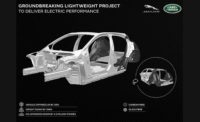The humble busbar is one of the least glamorous components in an electric vehicle. But, metallic strips and bars in different sizes and complexities are essential for distributing power from high-energy battery packs to e-motors, e-axles and other devices.
The most commonly used materials used for metal-stamped busbars are conductive alloys such as aluminum, bronze and copper.
“Busbars must be both strong and lightweight, which allows vehicles to extend their range before recharging,” says Kurt Moders, president of Kenmode Precision Metal Stamping. Kenmode is a 60-year-old firm in suburban Chicago that has invested in new technology to stay “ahead of the curve to meet new requirements for our customers…as the demand for electric vehicles grows exponentially.”
To meet the need for new busbar designs, including larger parts, Kenmode recently added a 300-ton press for metal stamping.
"Every busbar design is different from one battery to the next because of fit and function,” explains Moders. “We work with our customers' engineers to find the most economical way to produce the busbars needed. One recent project for an electric vehicle required 13 new tool designs for the metal-stamped busbars….”
Another old company adapting to growing demand for new-age vehicles is Samuel Taylor Ltd. (STL). The 121-year-old British firm has been mass-producing electrical contacts since 1927. It was recently awarded funds from Innovate UK to develop a new type of busbar.
EVBus is a collaborative project between STL and TWI Ltd. that is developing a copper-to-aluminum bonding technique for use in zero-emission vehicle (ZEV) busbars.
“Joining copper to aluminum would allow for lightweighting of EV busbars, while maintaining electrical properties,” says Carl Siviter, sales and marketing manager at STL. “Busbars are an integral part of EV battery packs. Improving the busbar can lead to lighter packs, therefore extending the range of ZEVs.
“Successful bonding will allow the resulting product to be laser welded to parent copper or aluminum, thereby solving the issues currently associated with laser welding dissimilar materials,” explains Siviter. “The goal of the project is to investigate the feasibility of bonding copper to aluminum directly, or using interlayer materials.
“[We] aim to use this process to manufacture and market busbars for EVs,” adds Siviter. “[Our] expertise in providing specialist busbars for EV [applications] represents a significant area of potential growth for the company. There is a significant challenge in producing an aluminum product range, but success in this technology will assist in developing lighter, greener vehicles of the future.”


